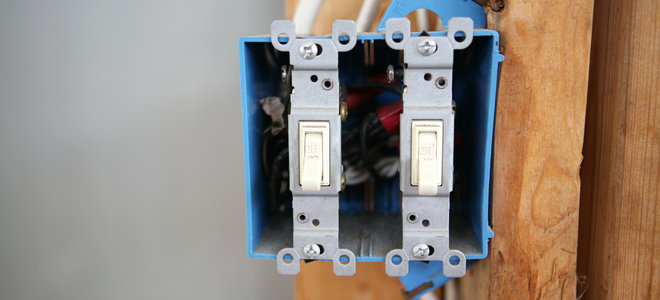Troubleshooting Tips for Light Switch Wiring

If you intend to do any light switch wiring, you should first familiarize yourself with a few troubleshooting tips. There are many areas to check when attempting to troubleshoot electrical areas, but below are four of the most basic ones. Get to know these suggestions, and you’ll make any light switch wiring job that much easier.
Before You Start
There are a few questions you may be asking yourself from the start. Number one, is the switch “on”? Or, is the light bulb burned out? Also, is the GFI receptacle or GFCI breaker tripped? Lastly, is the circuit breaker tripped or a fuse blown? If the latter is the case, your next step will be to figure out what caused the circuit breaker to trip or fuse to blow.
Safety First
Before you begin your investigation, remember a few important safety tips. For starters, never work with energized circuits or wires. Therefore, identify the circuit and turn it off, then mark the circuit so others know your are working on it to make sure it remains off. Before you do any sort of wire testing, make certain you have capped wires with wire nuts or insulated them with a healthy strip of electrical tape—particularly when you are required to turn on the circuit. Also, make a note of the hot wire going in with either black or red electrical tape. This way, you can distinguish it from all other wires.
Identification
When you first open the switch, identify the cable that brings juice in. And once again, never work on a circuit that is powered-up.
Look Out for Loose Connections
One of the primary issues you’ll run into when troubleshooting light switch wiring involves incidents of loose connections. Therefore, make absolutely sure your wires are snugly connected to the switch. Double-check to make certain screws are tightened in such a way that they will securely keep wires in their places.
Study the Wire Ends
Look very closely at the wire ends. Especially be on the lookout for any bent, nicked, or frayed ones. Whenever a wire end becomes compromised in one of these three manners, they will not provide good connections. To fix such issues, merely trim the wire ends and strip away the plastic coating until approximately an inch of raw wire is revealed. Then reattach the newly exposed wire to the switch.
Check for Exposed Bare Wires Which May Be Rubbing Against an Electrical Box
If you’re having light switch wiring troubles, you might consider looking for bare wires, which are exposed and touching the electrical box. Bare wires touching an electrical box can either blow a fuse or even trip a circuit breaker. To prevent this, simply make certain your wires are coated with enough plastic sheathing to protect them. If these wires do not have enough outer protection, merely wrap any exposed (or bare) portions with electrical tape.
Replace a Switch
Many times, the only solution to your wiring problem is completely replacing a switch. After all, switches are just like all mechanical parts in that they break down and stop functioning. After a while, switch parts will wear out. Therefore, you’ll need to take out the old switch, and put in the new one. But before you go and make this switch, make sure you have the proper switch for the circuit. One way to check and make sure your new switch is the right one, is that it has the same number of screws and terminals as the original one.




